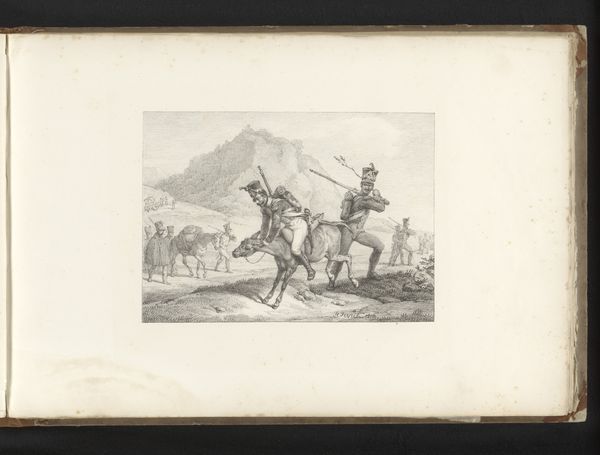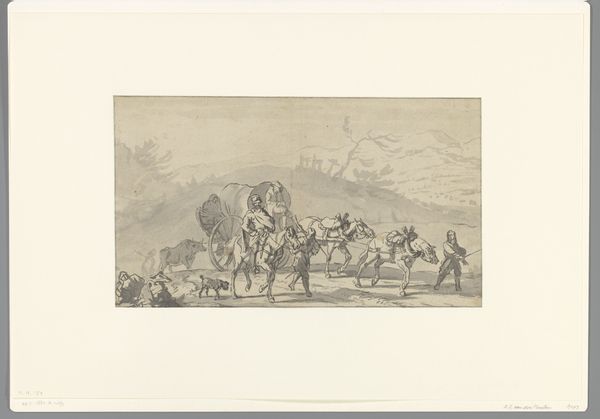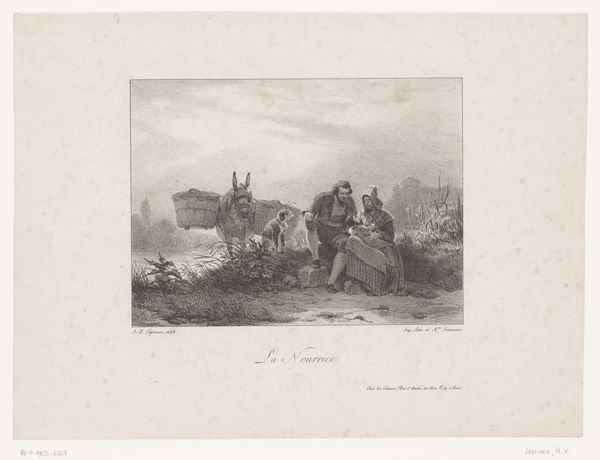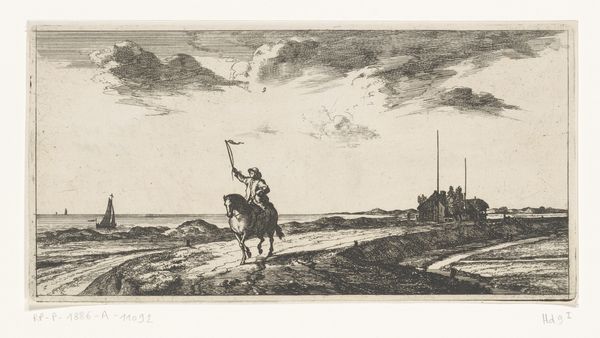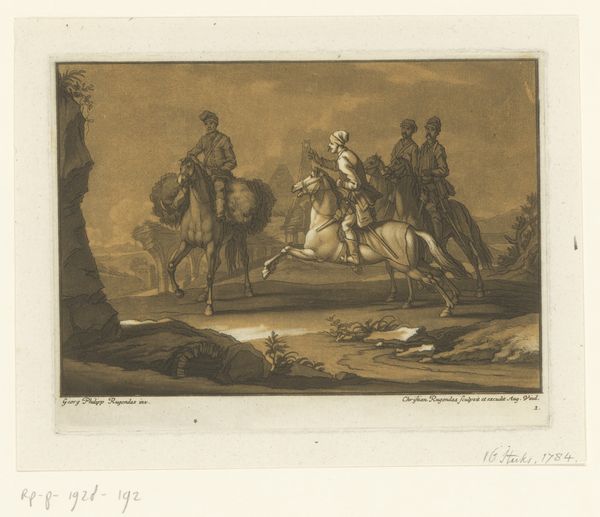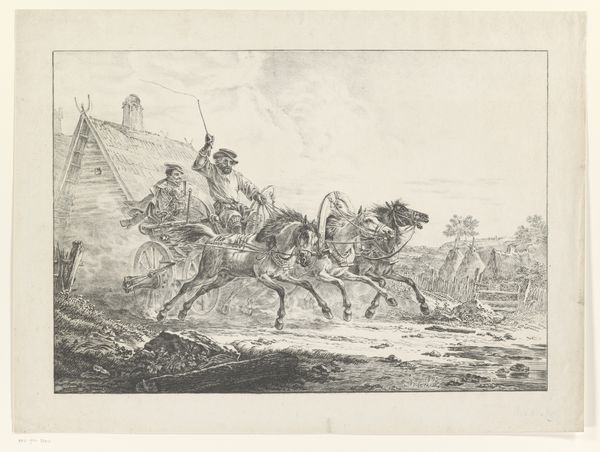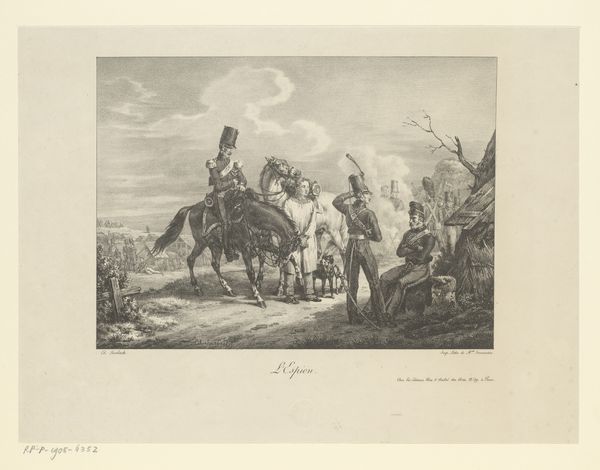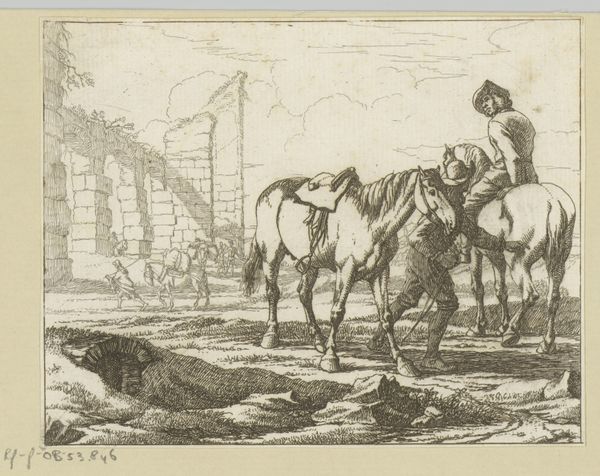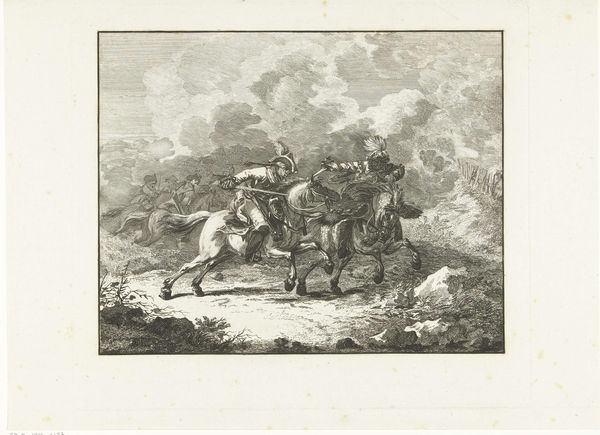
engraving
#
narrative-art
#
landscape
#
figuration
#
romanticism
#
engraving
Dimensions: height 285 mm, width 357 mm
Copyright: Rijks Museum: Open Domain
Curator: Here we have Jacob Ernst Marcus’ “Landschap bij stormachtig weer”, or “Landscape in Stormy Weather,” an engraving dating to 1807 and residing here at the Rijksmuseum. My first impression is one of muted drama; there is tension and a certain bleakness about the scene, rendered beautifully with such detail. What are your initial thoughts? Editor: Well, the obvious thing is its material being—engraving on what I presume to be laid paper, which would've been produced laboriously by hand. Look how he exploits the inherent linearity of engraving, turning it into visual energy as well as tonal variation. One thinks about the cultural function of printmaking: a mode of production accessible and disseminated among wide audiences… Curator: Certainly. But I think the choice of medium enhances the inherent Romanticism, capturing a very specific atmospheric pressure—note the bowed tree and frantic figures on the left, or even the slight anxiety rippling through the horse’s body. This speaks to larger allegories; the smallness of humanity against the sublimity and indifferent power of nature. Editor: But there’s something rather *staged* about it too. We’re encouraged to read “pathos,” but the composition guides the viewer a little *too* efficiently from the foreground drama, through a pleasant landscape, ending at the implied economic prosperity embodied in the ship. Curator: That controlled gaze reflects, I think, something of a shift away from earlier landscape traditions; there’s an implicit humanism within it. He’s not simply representing a neutral vista. What do you see in these groupings? We have two struggling figures, and then the figure on horseback leading his own. Editor: A stark visual economy between burden and relative privilege… though everyone seems a bit troubled! One imagines each figure performing a necessary social labor; the figures being carried appear unwell, needing physical care and possibly on route for religious succor within the nearby steeple? The sailor seems like a merchant. The engraving could speak to something about the increasing wealth disparity with mercantile exchange during that era, even? Curator: A strong reading, I agree—and how powerful that a seemingly “simple” landscape manages to weave so many symbolic, historical narratives. The very human thread that underscores our existence is not an individual but a communal event. What have we taken away from this particular print, today? Editor: For me, it reaffirms the radical potential of printed images; seemingly straightforward at first glance but ultimately a powerful medium for distilling complex social relationships, class dynamics, and inequalities within a time.
Comments
No comments
Be the first to comment and join the conversation on the ultimate creative platform.
